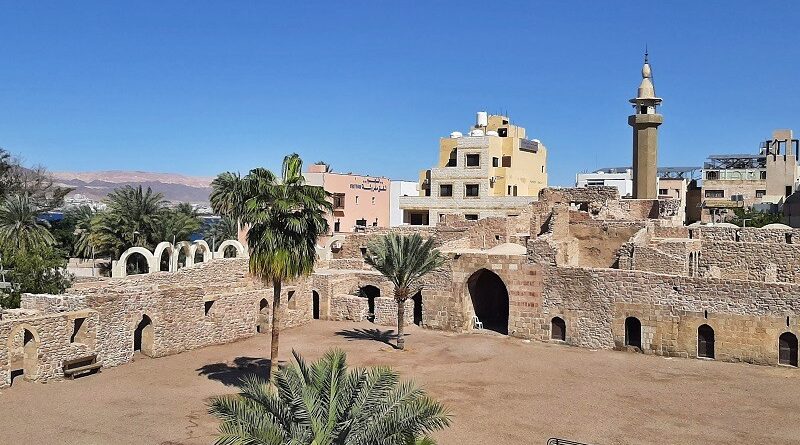Exploring Aqaba, Jordan’s Seaside Resort City
This destination guide covers the sights I visited during my trip to the seaside resort city of Aqaba in Jordan.
A visit to Aqaba
With an abundance of cheap flights to Jordan, I couldn’t resist booking a ticket from Bucharest to sunny Aqaba on the Red Sea coast.
After all, who can resist some winter sun when the flight ticket costs only €14?
I had passed through Aqaba once before during my backpacking days as a student, travelling overland from Istanbul to Jerusalem via Syria and Jordan.
However, on that trip, I had little time to explore Aqaba as I was merely transiting through the city on my way from Wadi Rum to the Wadi Araba border crossing into Eilat, Israel.
This Jordan trip therefore provided a wonderful new opportunity to explore Aqaba and visit the city’s sights.
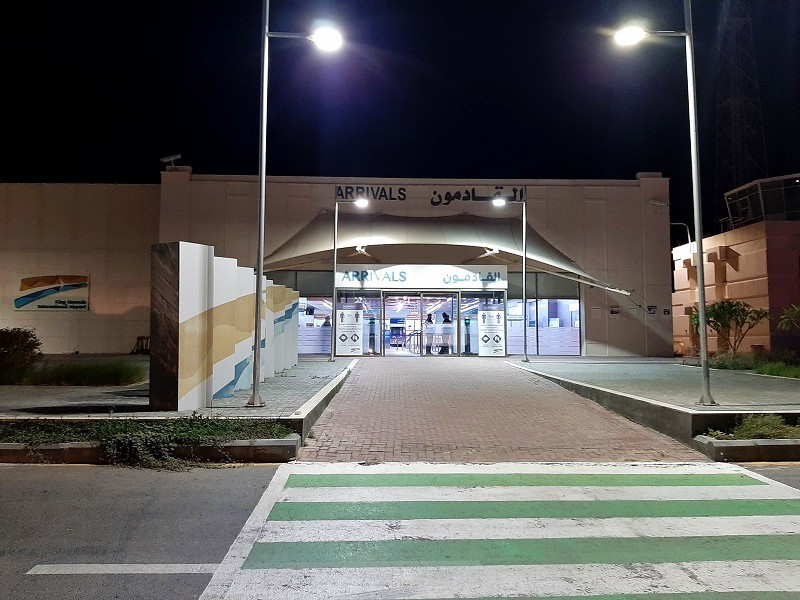
A walk along the seaside promenade
As my flight into Aqaba landed at midnight, I went straight to sleep at my hotel upon arrival and woke up the next morning fully rested, ready to explore the city.
The first activity I embarked on was a stroll along Aqaba’s seaside promenade.
After all, what could be better than enjoying some lovely morning sunshine in the middle of winter when the weather in your home country hovers around 0 degrees Celsius with light snow?
Although winter temperatures can vary significantly across Jordan, the southern region around Aqaba enjoys more stable weather, with a mild, sunny climate and average temperatures typically ranging from 20 to 25 degrees Celsius.
Indeed, on this day in the middle of March, the temperature was well above 25 degrees Celsius.
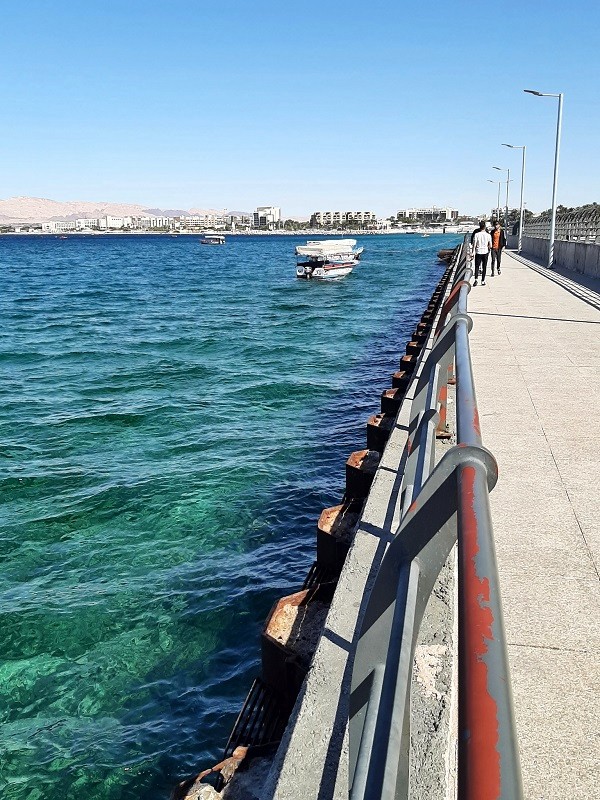
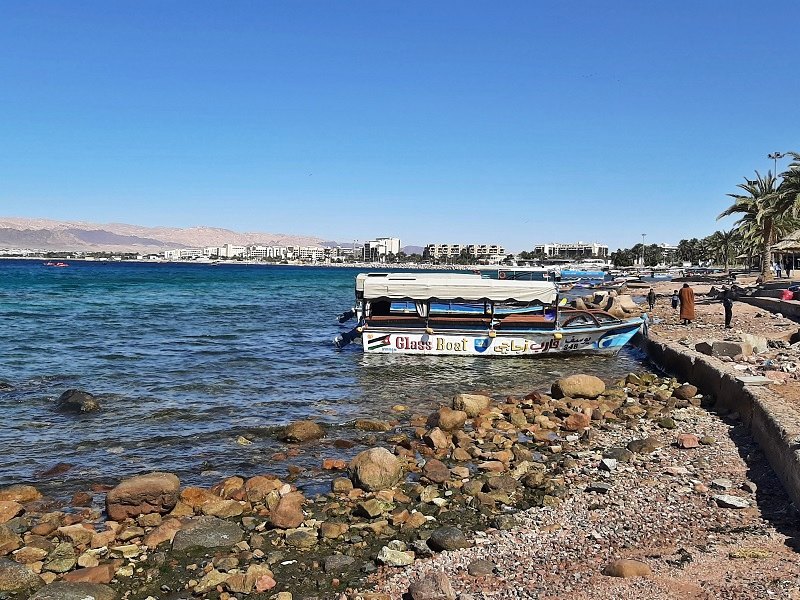
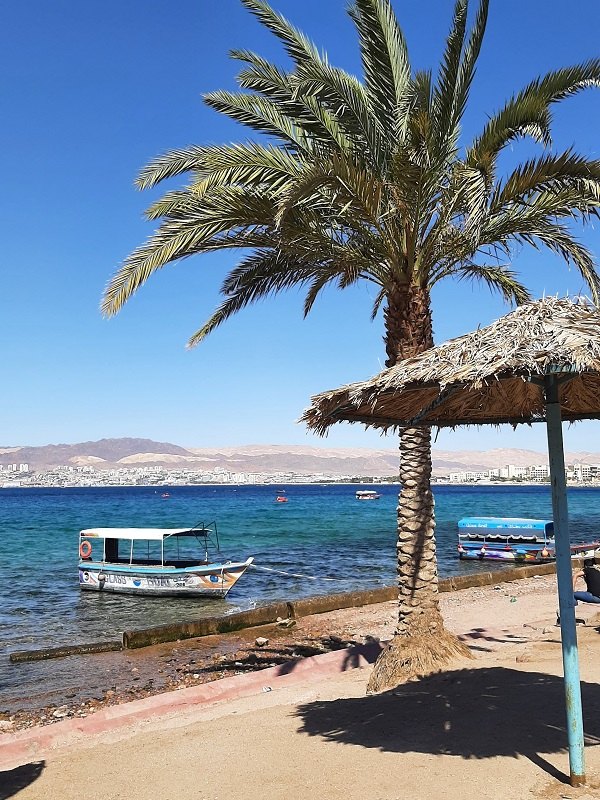
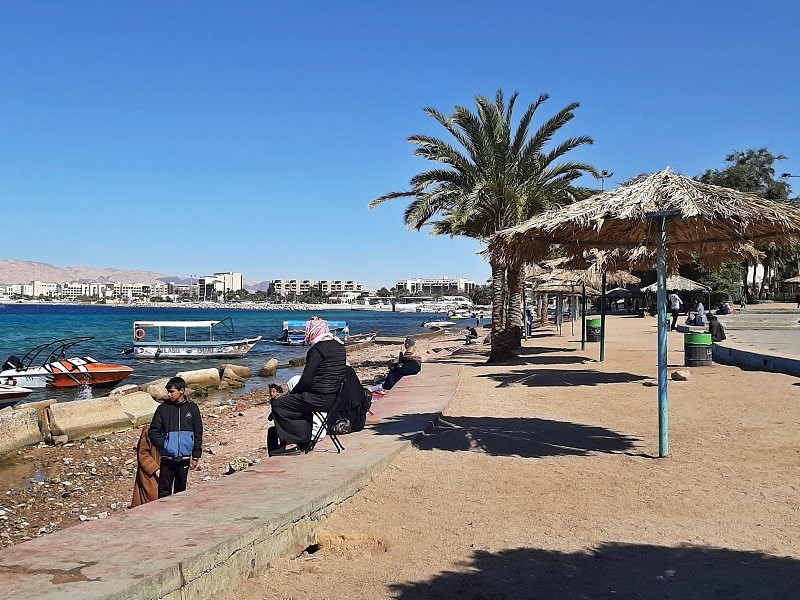
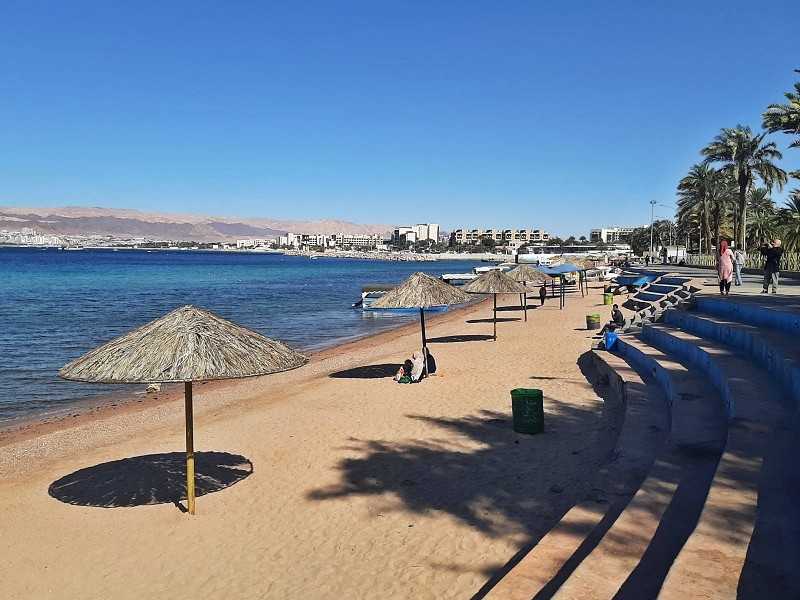
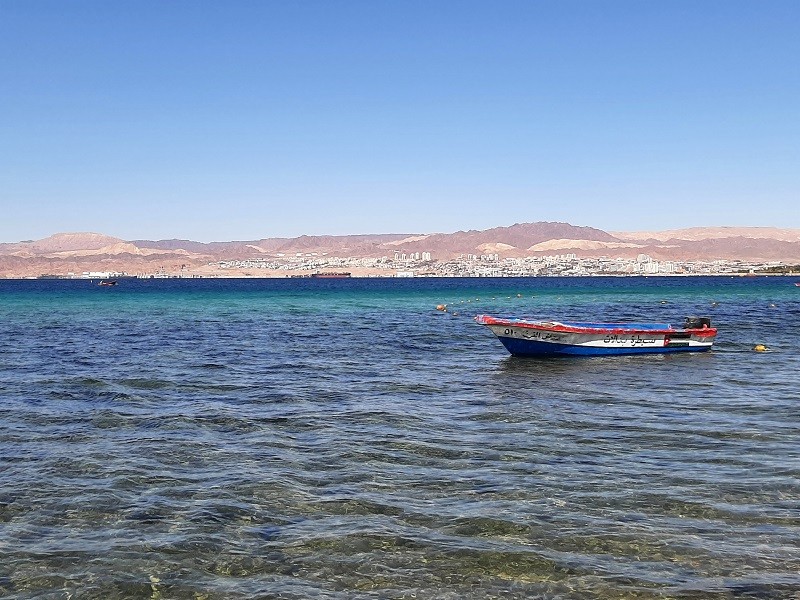
Aqaba Fort
Aqaba Fort, occasionally referred to as a castle, is the main sight in Aqaba and is located just a stone’s throw from the seashore.
You can visit Aqaba Fort free of charge, as there is no entrance fee for this fortress, which dates back to the Mamluk era of the 14th century.
However, most of what you see today was built in the late 16th century under Ottoman rule, when the fort was renovated and remodelled.
The names of Mamluk Sultan Qansuh al-Ghawri and Ottoman Sultan Murad III are still inscribed on the fortress walls.
Aqaba Fort primarily served as a fortified caravanserai (traveller’s inn) to protect Muslim pilgrims heading south towards the holy cities of Mecca and Medina.
However, in the later part of the 20th century, Aqaba Fort was primarily used as a defensive bulwark by the Ottomans.
Aqaba Fort fell to the Arab Revolt of 1917 in the Middle Eastern theatre of World War I, after which Lawrence of Arabia rode straight to Cairo to request that the British ship food supplies and weapons to the coastal city to consolidate their conquest.
Although Aqaba Fort is a historic place and certainly worth a visit, it unfortunately lacks any exhibits or information panels inside.
Nonetheless, it’s great fun to explore the ruins of the fort and climb on the walls and bastions.
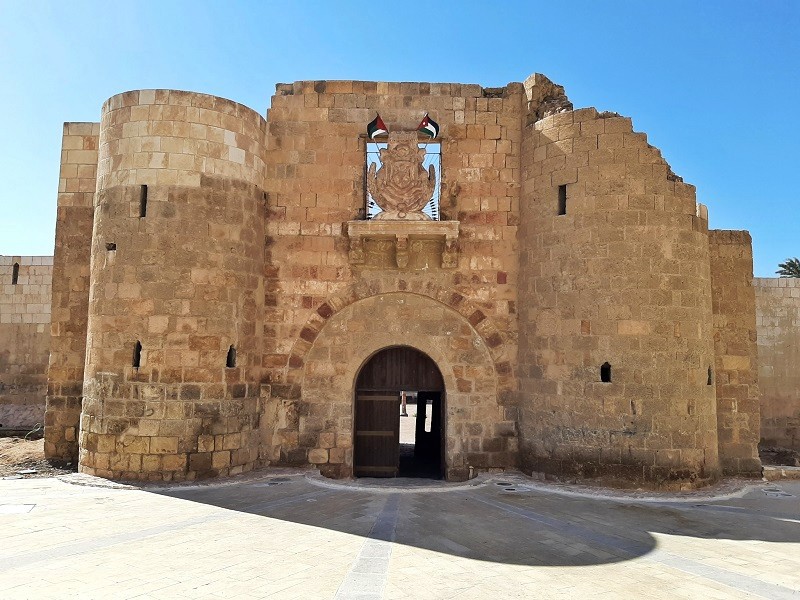
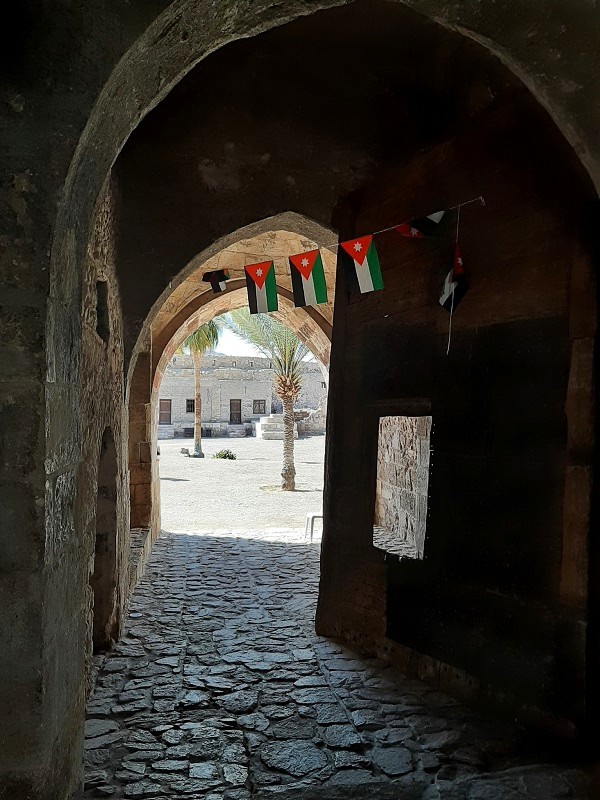
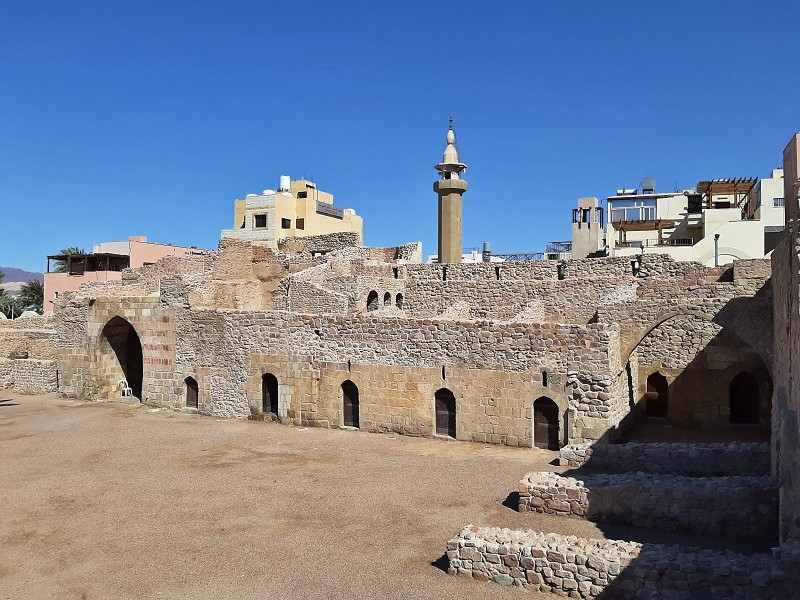
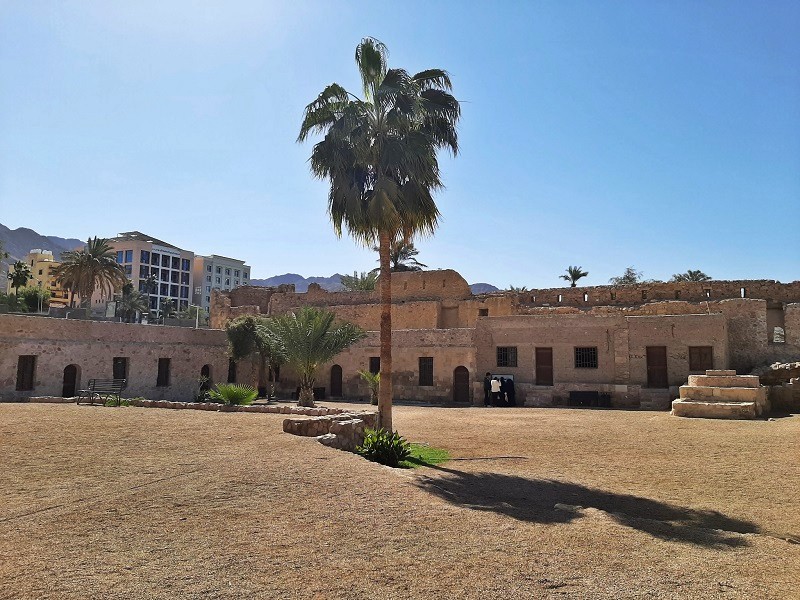
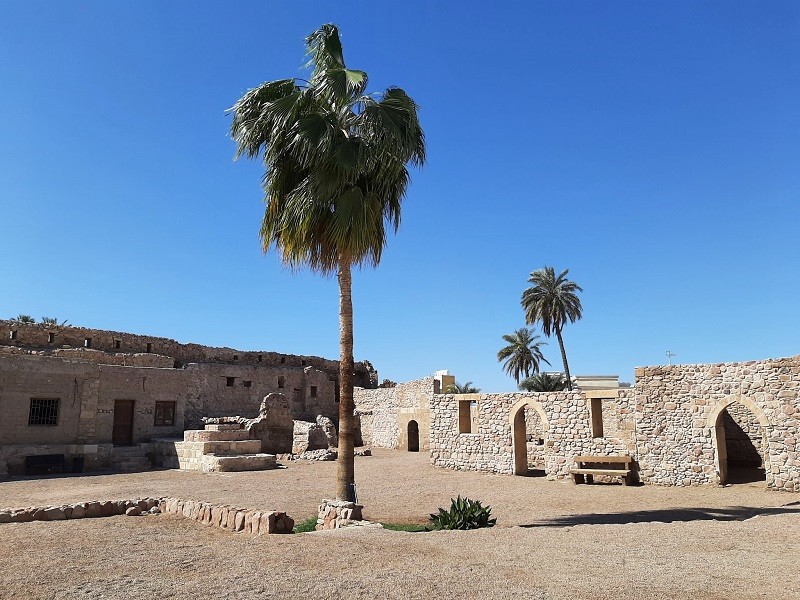
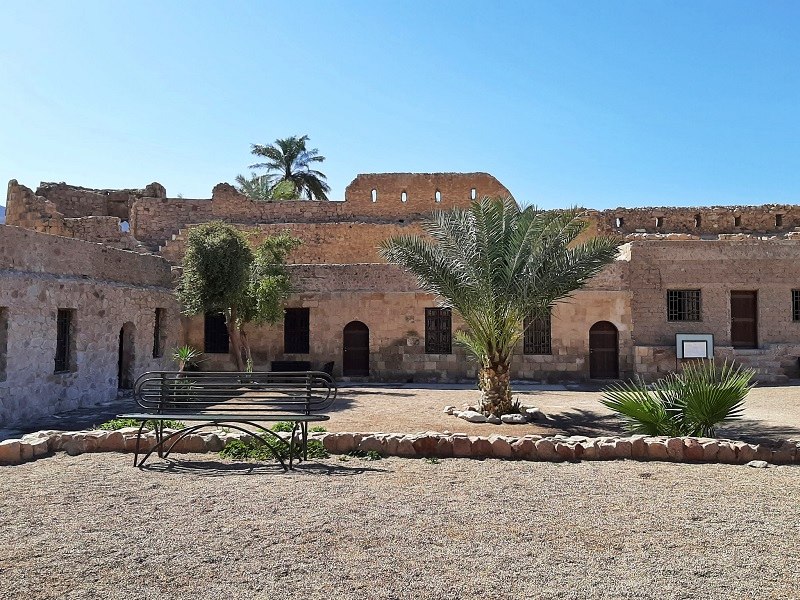
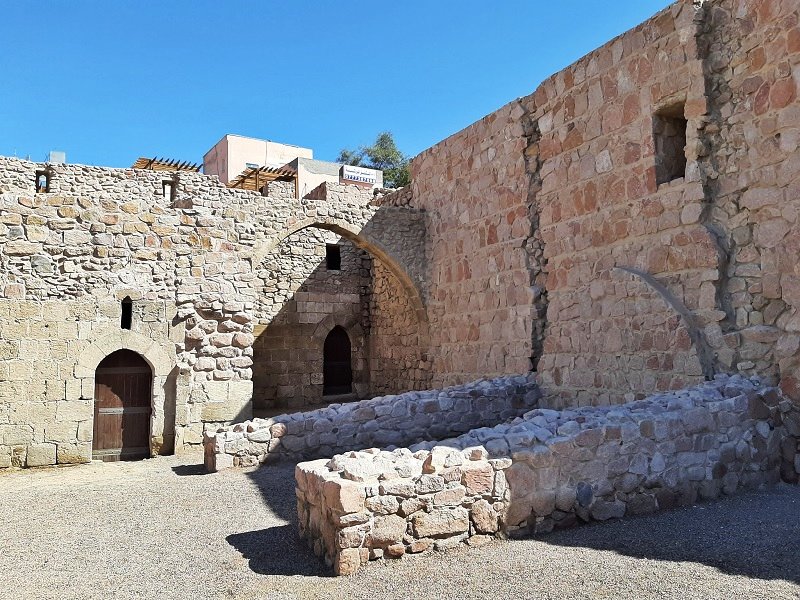
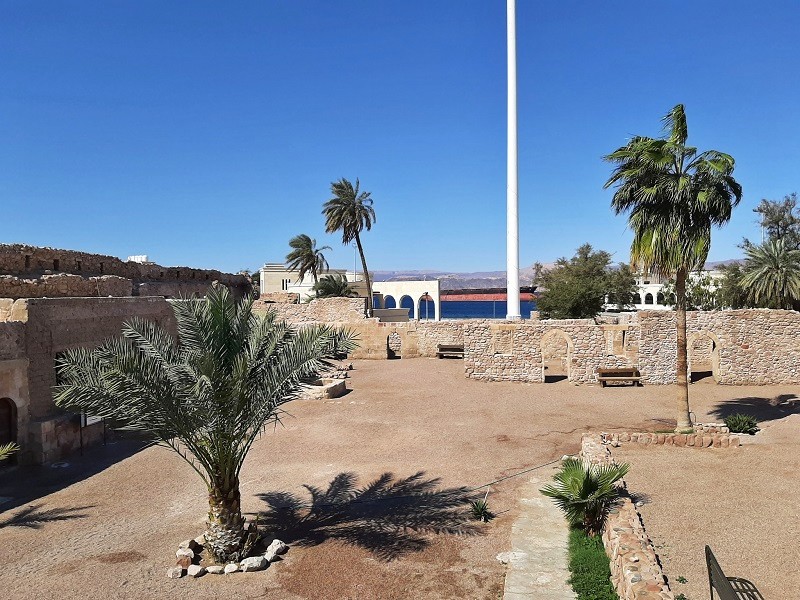
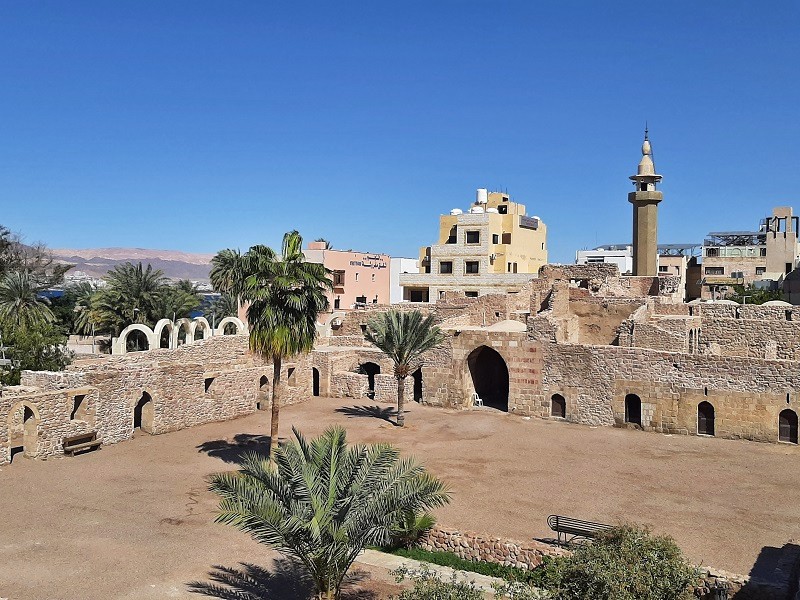
Arab Revolt Plaza
Nestled between Aqaba Fort and the sea lies Arab Revolt Plaza, which features an absolutely massive flagpole measuring 130 metres (430 ft).
Once the highest flagpole in the world, it has since been surpassed by several taller ones.
Sadly, the equally large Jordanian flag that usually flies high on the mast was not there when I visited Aqaba.
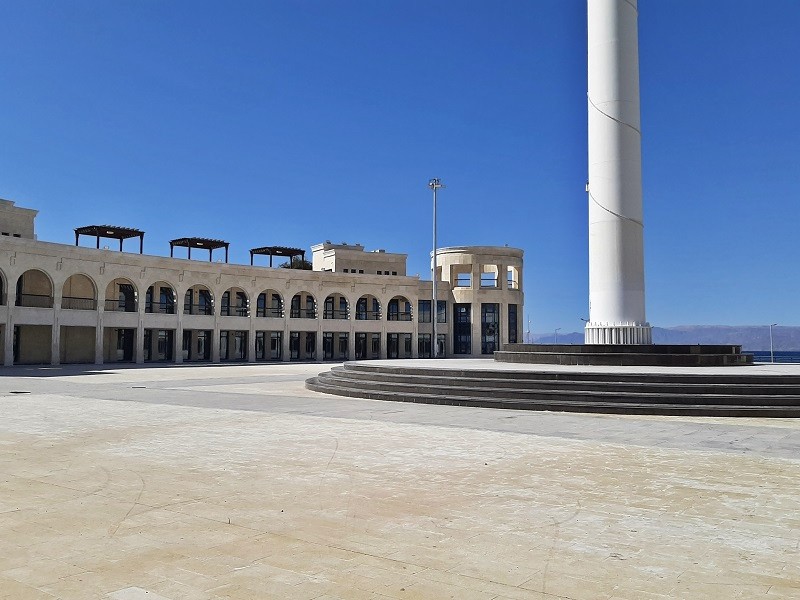
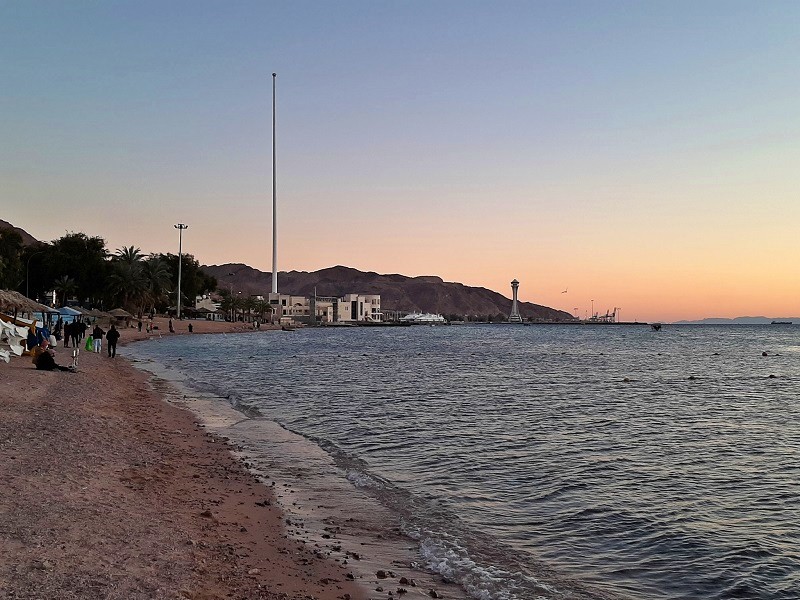
Aqaba beach time
If you want to visit a beach in Aqaba, you can choose between one of the public beaches or a private beach at a hotel resort.
Even in winter, the sea is warm enough for swimming, and I certainly enjoyed my dip in the salty waters of the Gulf of Aqaba.
There is a decent public beach right alongside the Aqaba promenade, featuring permanent beach umbrellas for shade that you can freely use.
Alternatively, you can head towards South Beach, located outside the city in the direction of the port.
These public beaches are perfectly fine for a dip in the sea or relaxing on the sand, but I wouldn’t recommend them if you are a Western woman.
Remember that Jordan is still a conservative Islamic country, and bathing on a public beach in a swimsuit (let alone a bikini) will definitely raise eyebrows at best or attract unwanted attention at worst.
As a female traveller, it’s best to opt for one of the private hotel beaches, where you can sunbathe and swim in complete privacy.
Although the Red Sea, including the Gulf of Aqaba, is an excellent destination for snorkelling, the Jordanian coast isn’t as good for this activity as the bit of Israeli coastline south of Eilat or the Sinai coast of Egypt, which is by far the best location for snorkelling.
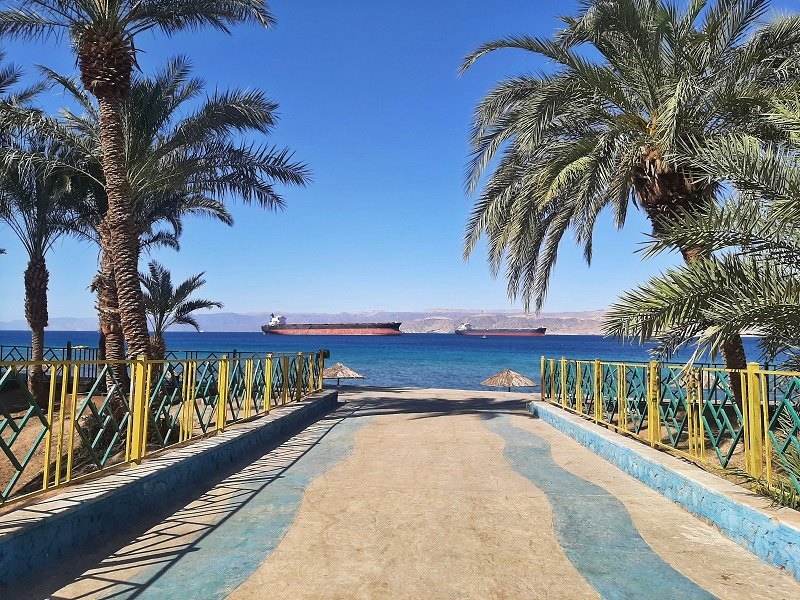
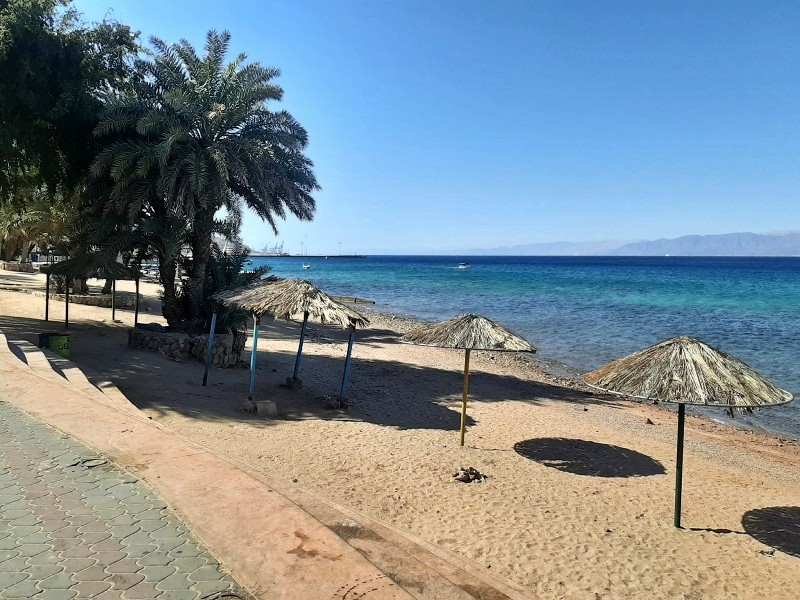
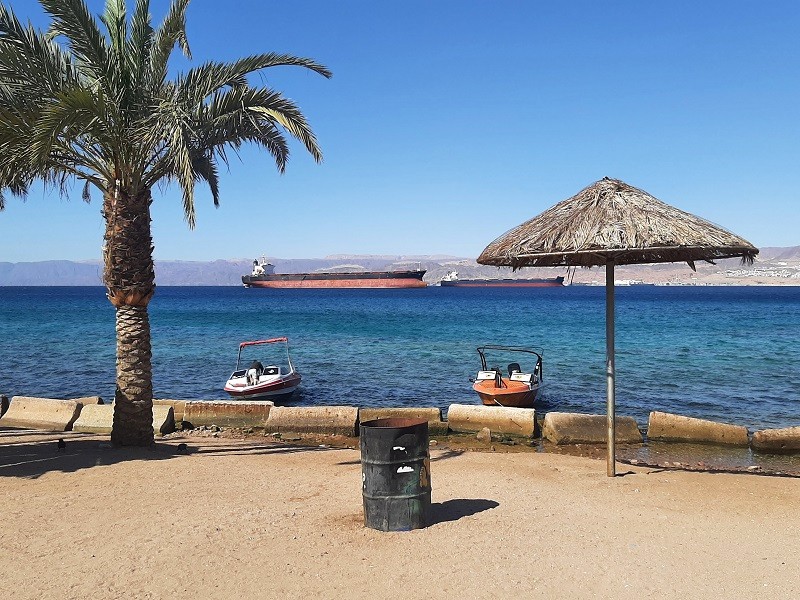
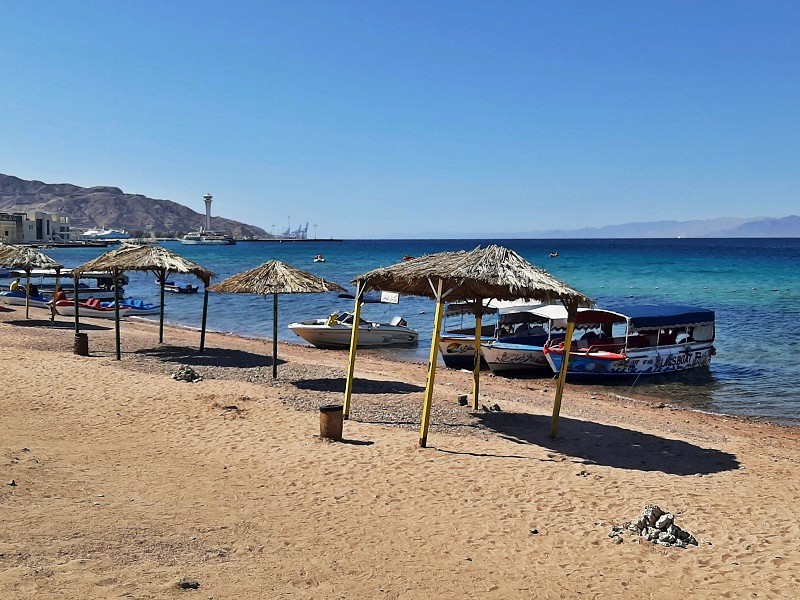
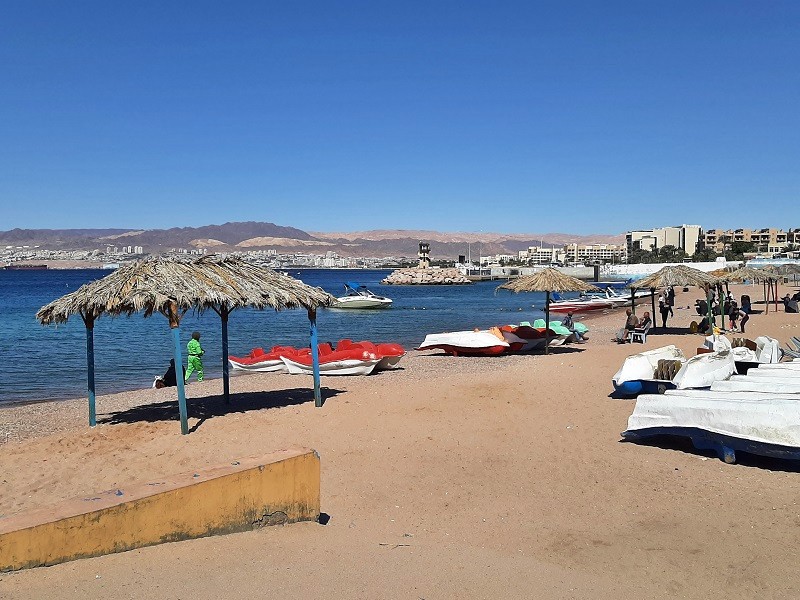
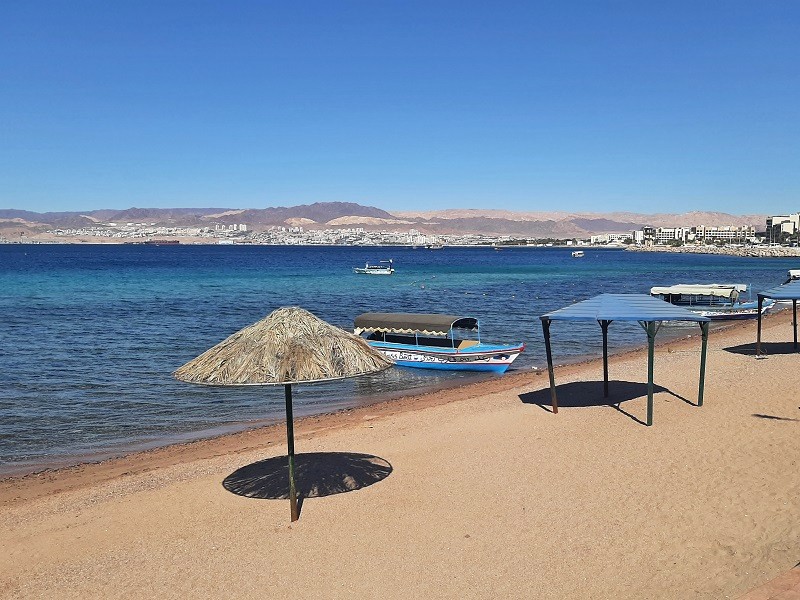
Seaside bars
Along the seaside promenade and public beaches, you can find a few ramshackle huts serving as cafés.
Here, you can sit down for a cold soft drink, juice, tea, or coffee.
Some of these cafés also offer nargilah (waterpipe), and I certainly enjoyed puffing on some apple-flavoured tobacco while sipping strong Arab coffee and gazing out at the sea.
If you want to drink alcohol, you’ll need to head to one of the bars or restaurants at hotels catering to foreign tourists.
You can also buy beer, wine, and other alcoholic drinks at one of the few alcohol shops in Aqaba, but since drinking in public is not allowed, these are primarily for consumption in the privacy of your own hotel room.
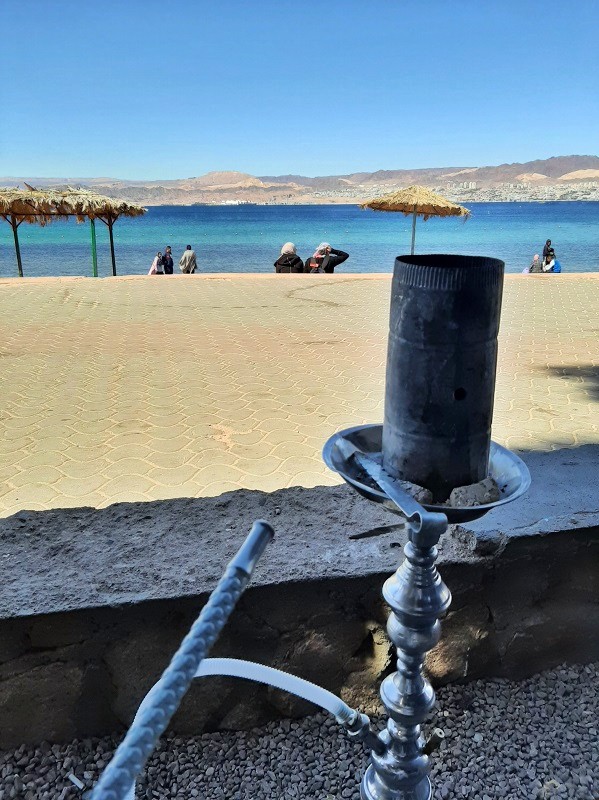
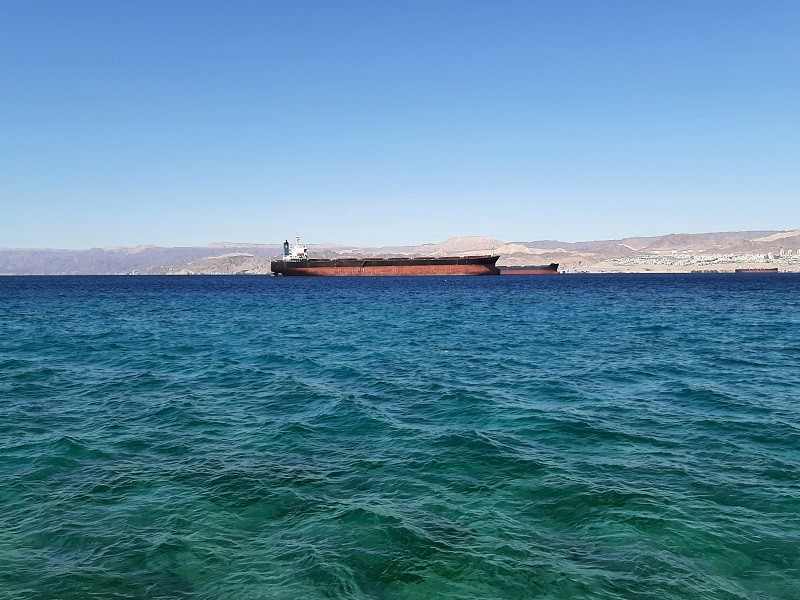
Sightseeing
After some seaside relaxation, it was time to explore more of Aqaba, so I walked towards the city centre for some sightseeing.
The striking white Sharif Hussein bin Ali Mosque is the largest in Aqaba and a prominent city landmark.
Unfortunately, when I inquired about visiting, I was told that it was not possible at the time for tourists to go inside.
At the large roundabout in front of the mosque, you’ll find a monument dedicated to the Arab Revolt, featuring Arab warriors mounted on horses and camels.
Some believe the figure on horseback is Sherif Nasir, who led the Arab forces in the Battle of Aqaba and the capture of the fort in 1917, while others think it represents Lawrence of Arabia.
From the monument, I walked up King Hussein Street towards the main hotel zone, where you can find the city’s largest hotel resorts, such as the Kempinski, InterContinental, and Al Manara.
Unsurprisingly, this is also the part of town here you will also find the most tour outfits, boutique shops, and restaurants.
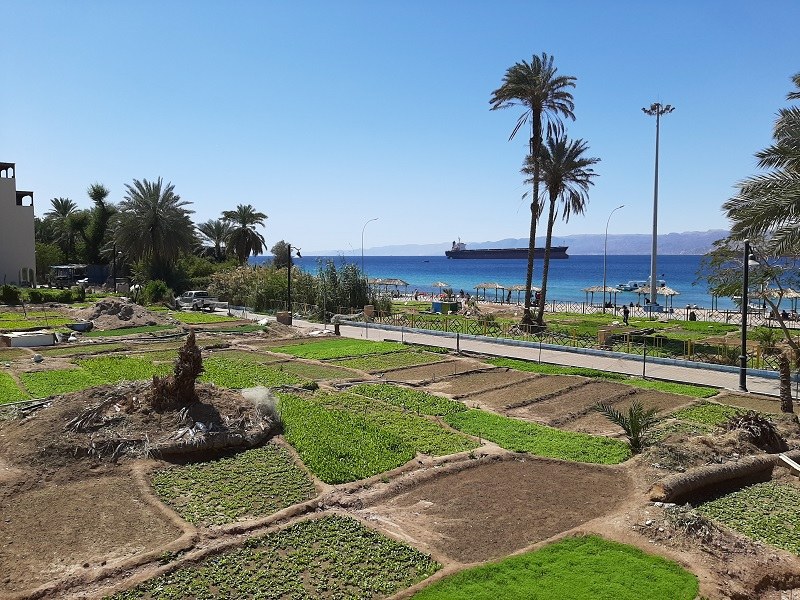
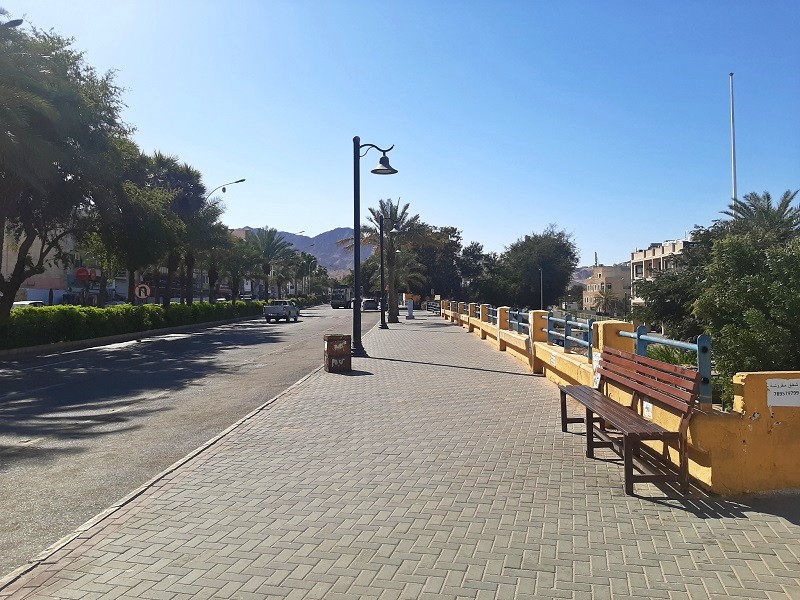
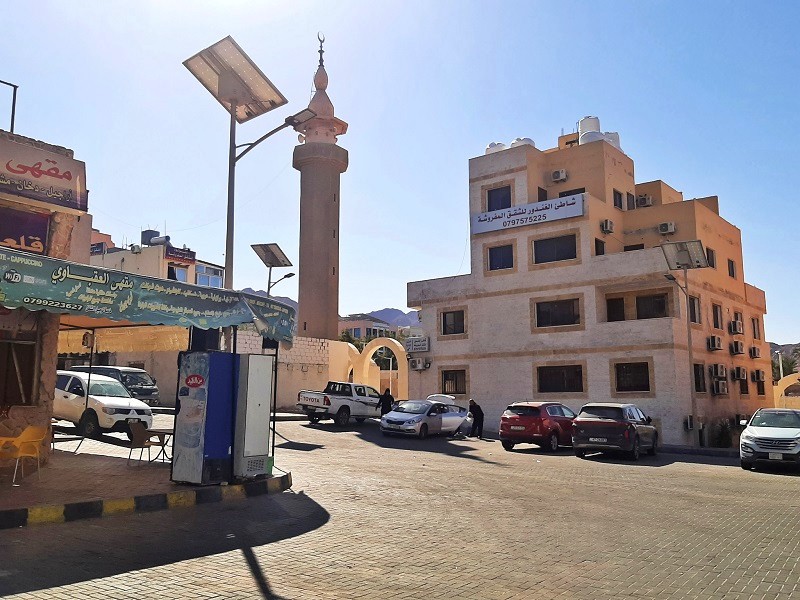

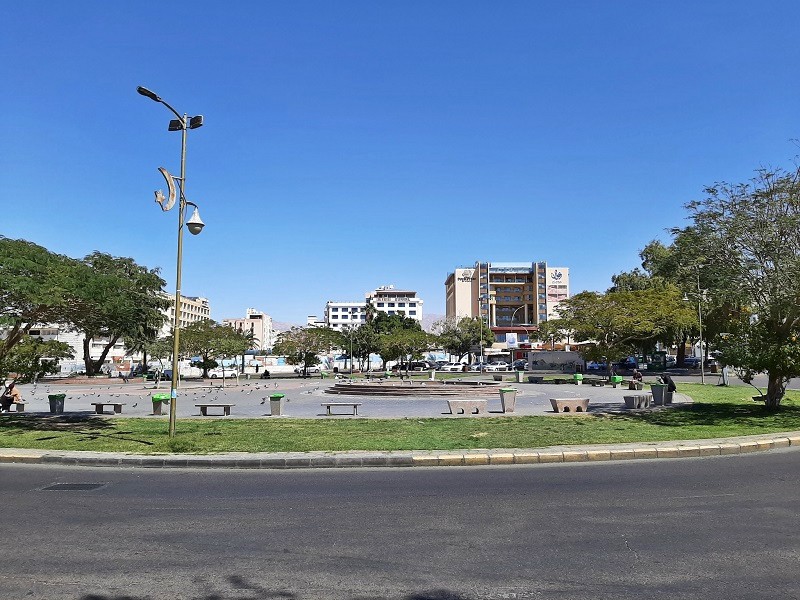
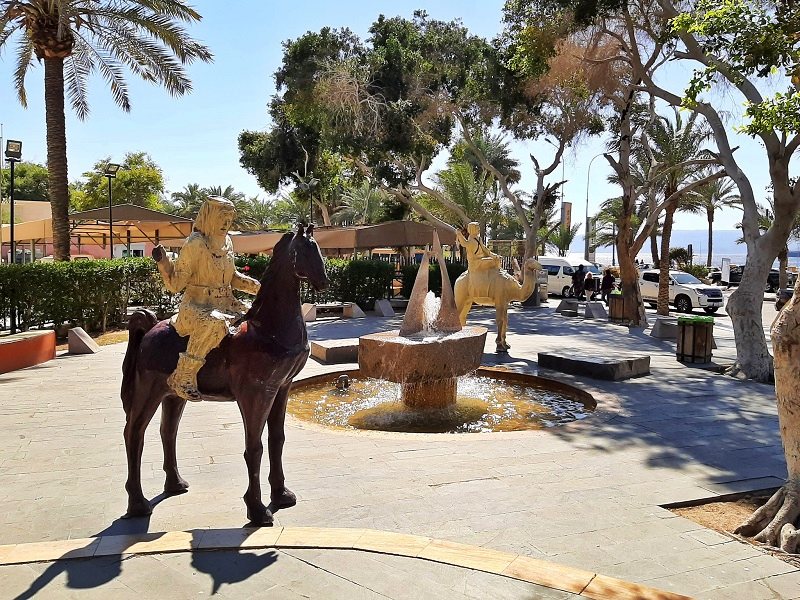
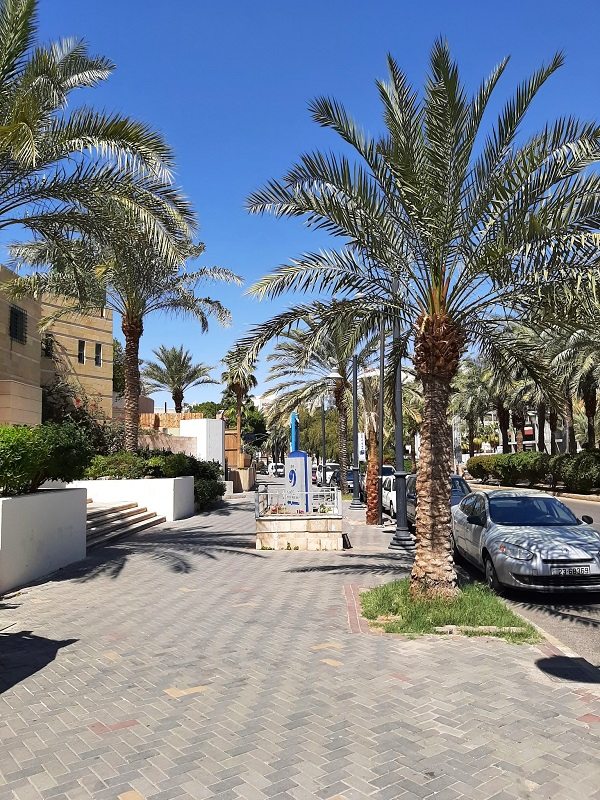
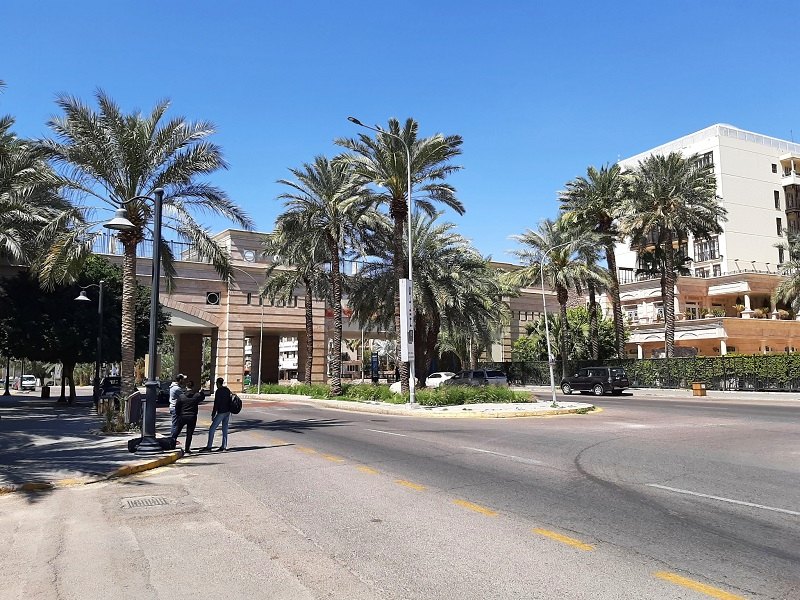
Ancient City of Ayla
Just north of Aqaba’s main hotel zone lies the archaeological site of the Ancient City of Ayla.
Ayla is the Arabic name for the city, though depending on the language, you may also encounter it as Aela (Latin) or Elath (Hebrew).
Due to its strategic location at the northern tip of the Red Sea and its proximity to copper mines, these lands, now divided between the modern states of Jordan and Israel, have been inhabited since antiquity.
Edomites, Assyrians, Babylonians, Greeks, Romans, Persians, and Byzantines alike have all controlled the city at various points in history.
In 629 AD, Arab armies conquered the region and brought the new religion of Islam with them.
The ancient settlement, which had been used by many civilisations before them, was left to decay by the Arabs, who built a completely new city here which they named Ayla.
Ayla was built in a rectangular shape and fortified with walls and two dozen guard towers.
The city thrived under successive Islamic caliphates such as the Umayyads, Abbasids, and Fatimids before being conquered by the Crusaders, only to be retaken by the forces of Islam led by Saladin.
Not much remains of the ancient Islamic city of Ayla, aside from some stone foundations, column bases, and arches.
As there is no entrance fee, you are free to explore the archaeological site of Ancient Ayla, though the lack of information panels requires a good deal of imagination to bring it to life.
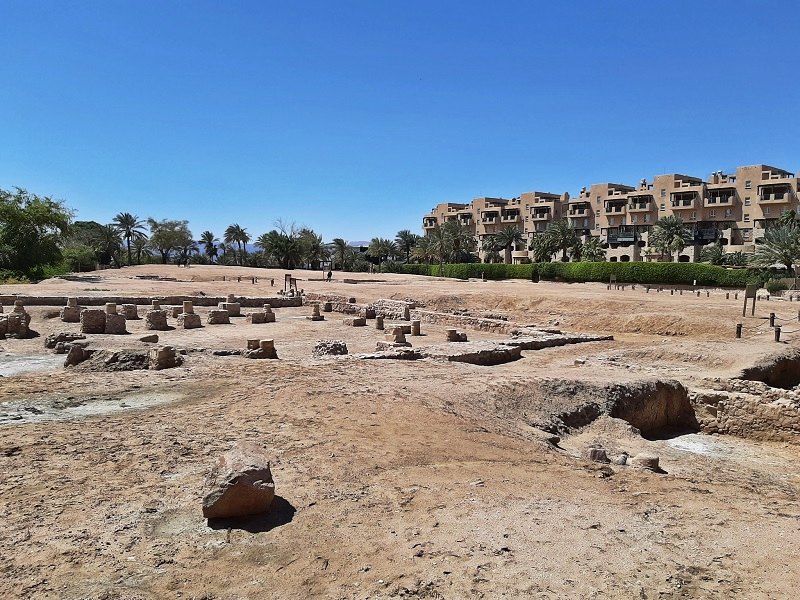
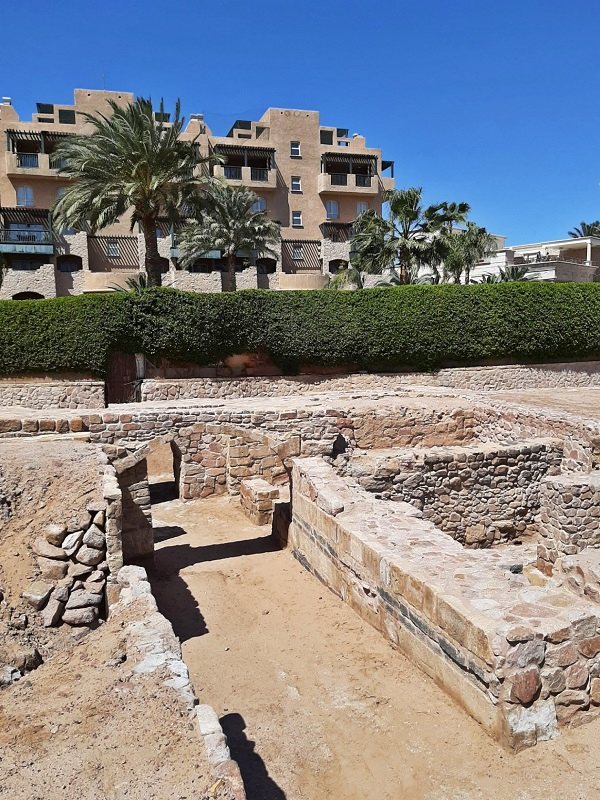
Lunch
In the city centre of Aqaba you can find plenty of appealing cafés and restaurants.
The restaurants on An-Nadha Street were particularly appealing, so I decided to have lunch at a place on this street called Khubza & Seneya.
Here, I enjoyed some delicious tabbouleh, hummus with beef shawarma, and grilled halloumi cheese.
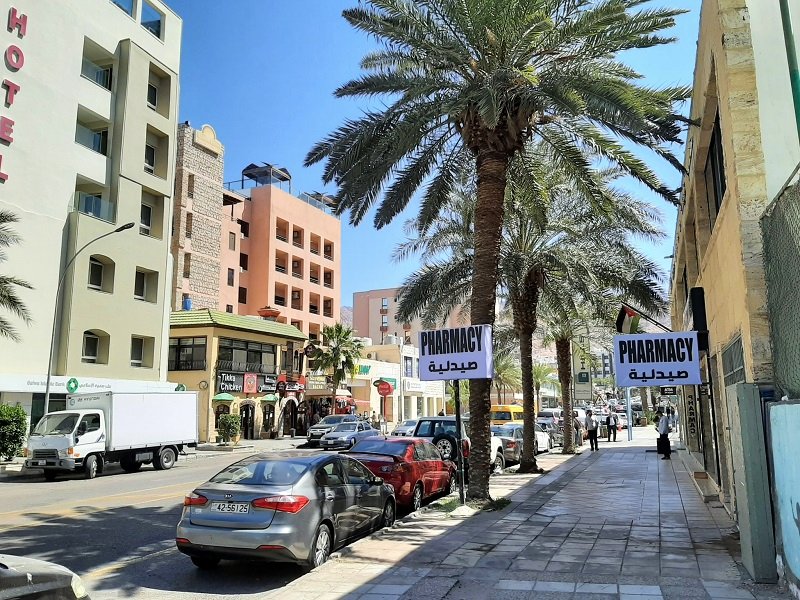
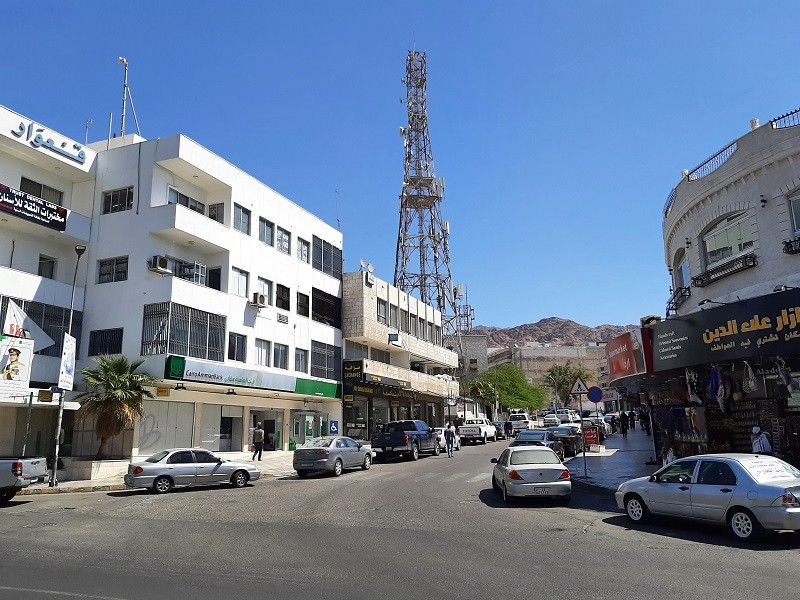
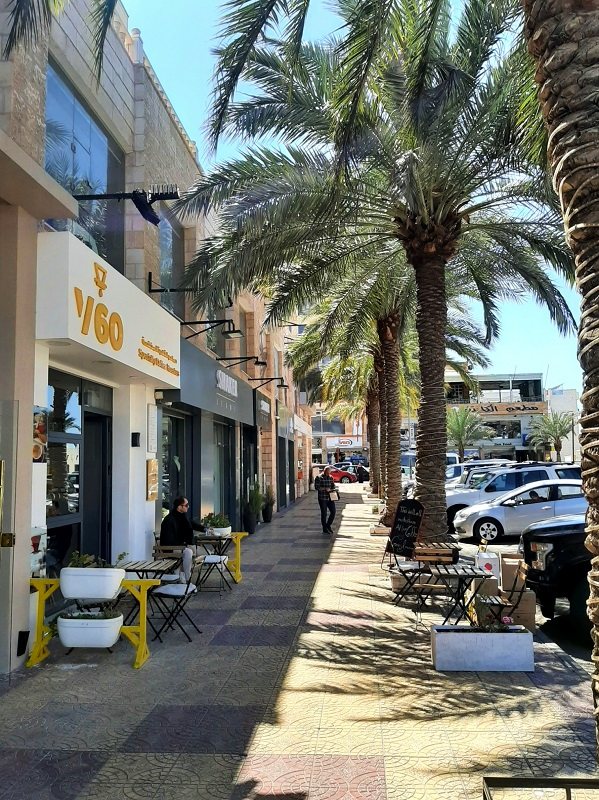
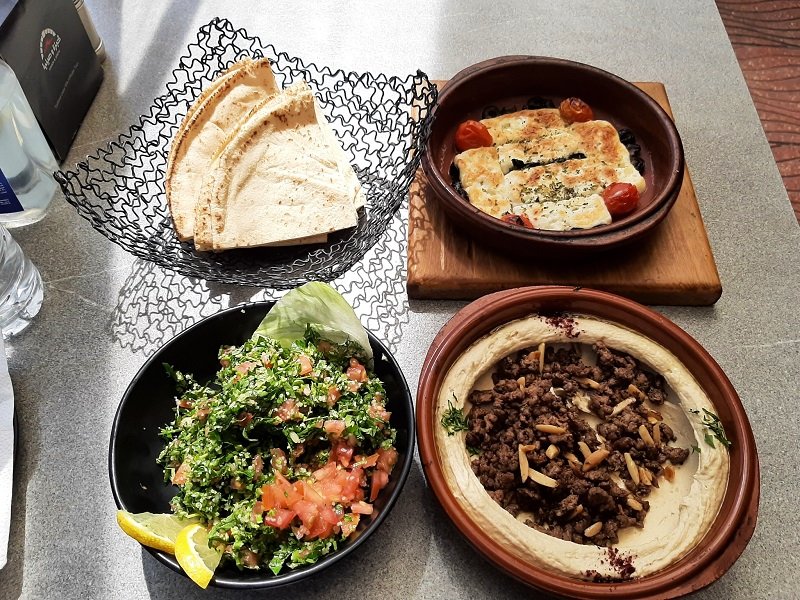
Shops and souqs
After lunch, I walked a bit more through the city of Aqaba.
Although there are various stores and small souqs where you can stock up on food, goods, clothes, or souvenirs, the afternoon is definitely not the best time of day for shopping.
Due to the heat, the streets are likely to be deserted, and most locals will only come out to shop in the evenings.
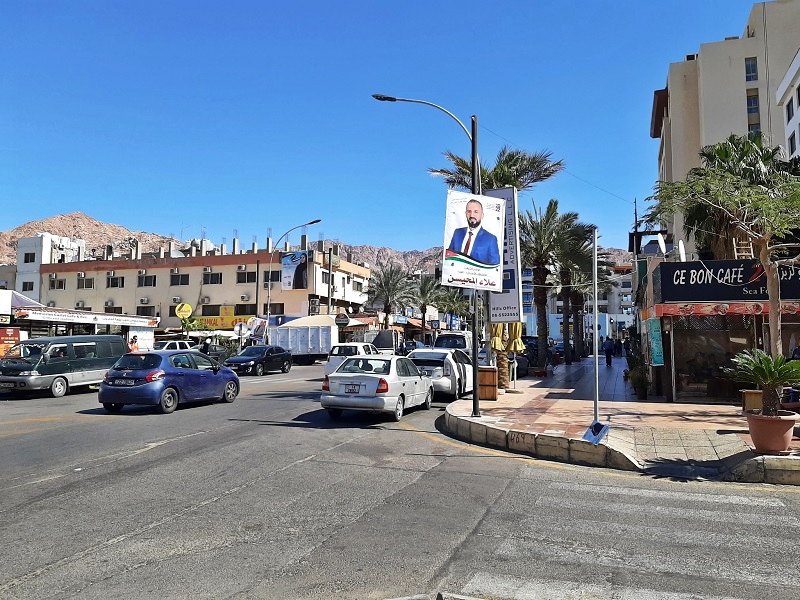
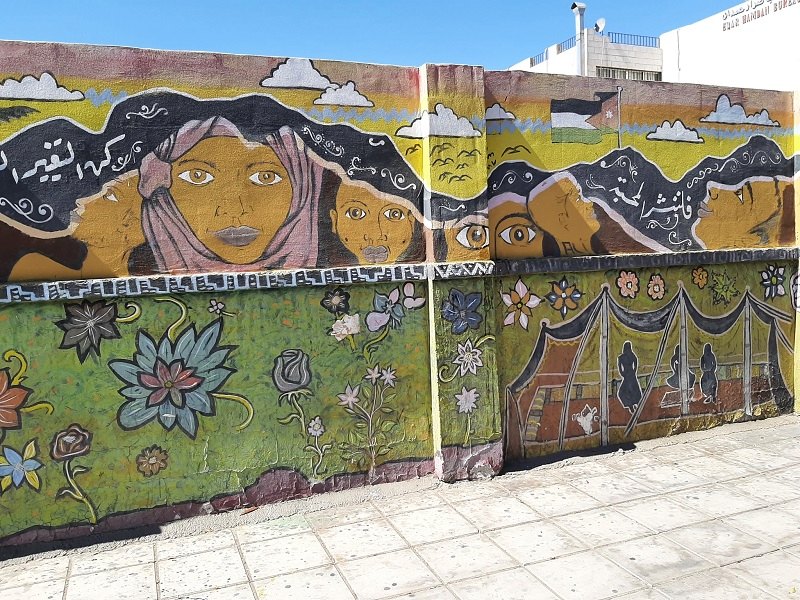
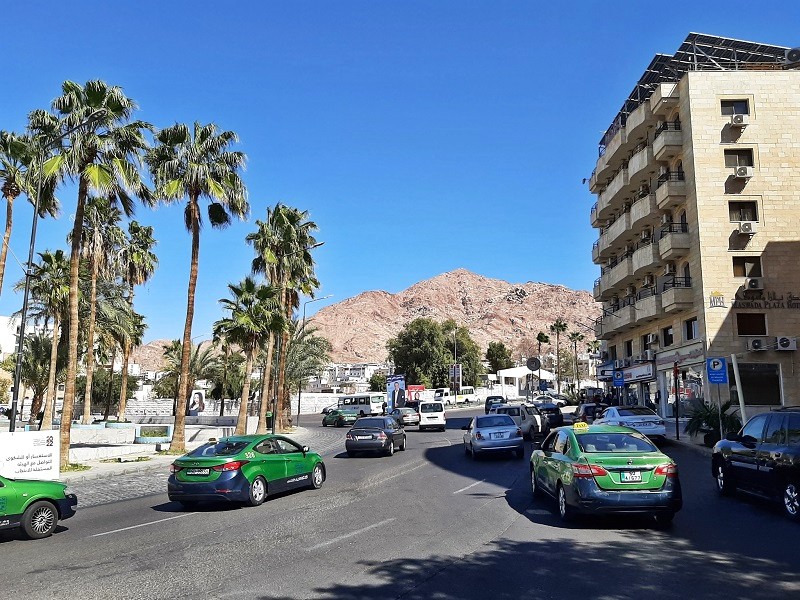
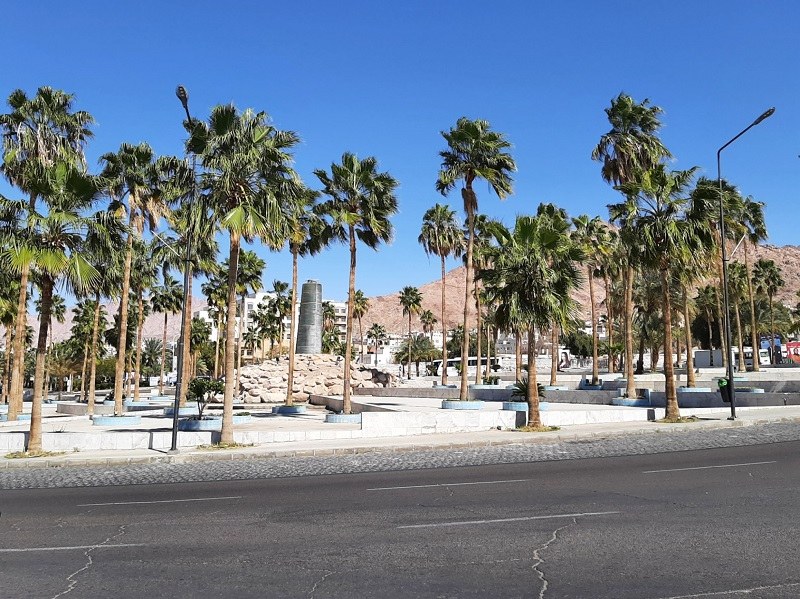
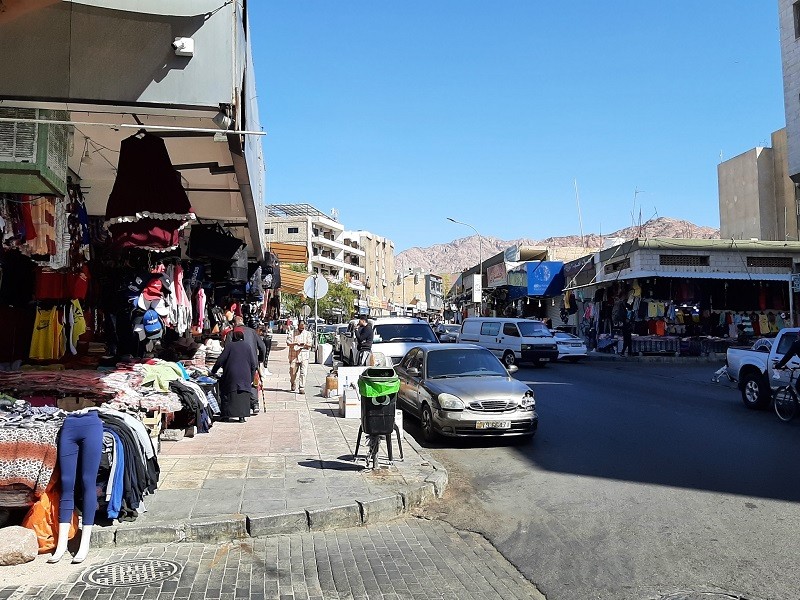
Sunset
After a short afternoon nap back in my hotel, I headed out again towards the seaside promenade to watch the sunset.
By this time of day, there were already far more people strolling along the promenade than there had been in the morning and early afternoon.
I sat on some steps and watched as the sun slowly set across the Gulf of Aqaba, beyond the rugged mountains of the Sinai.
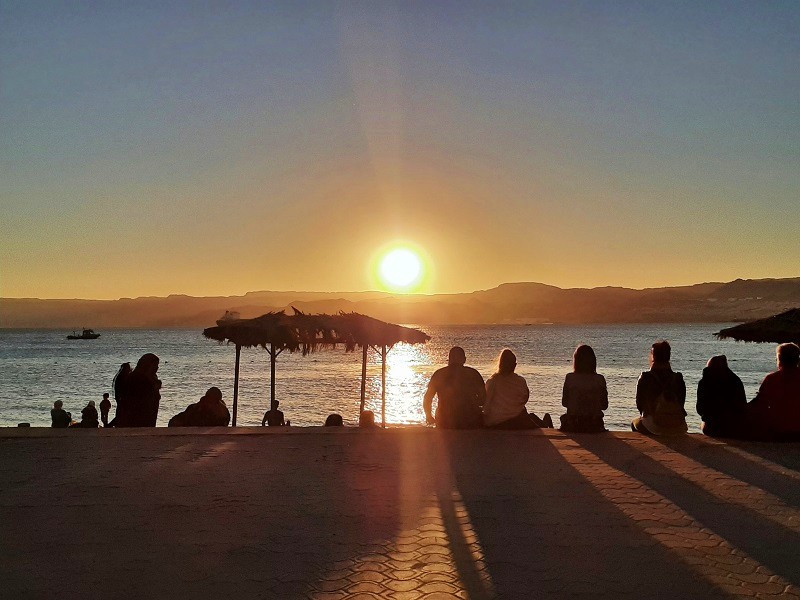
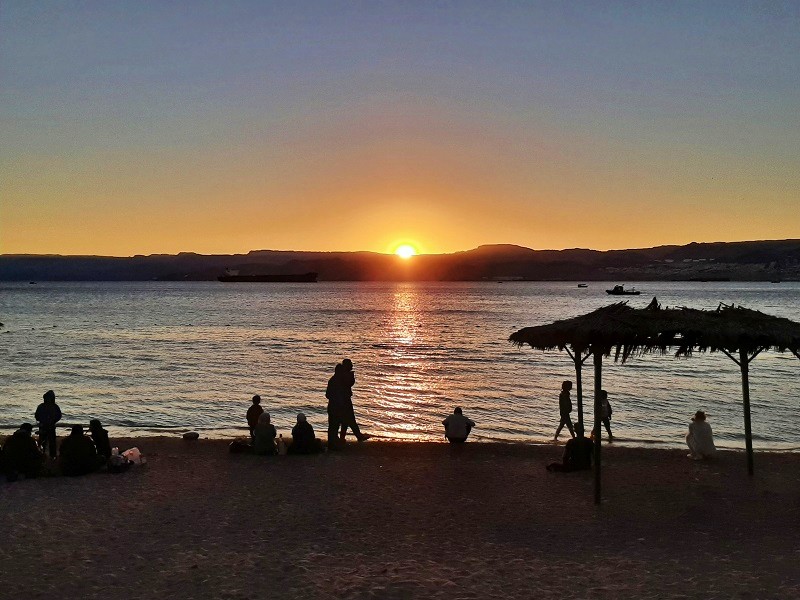
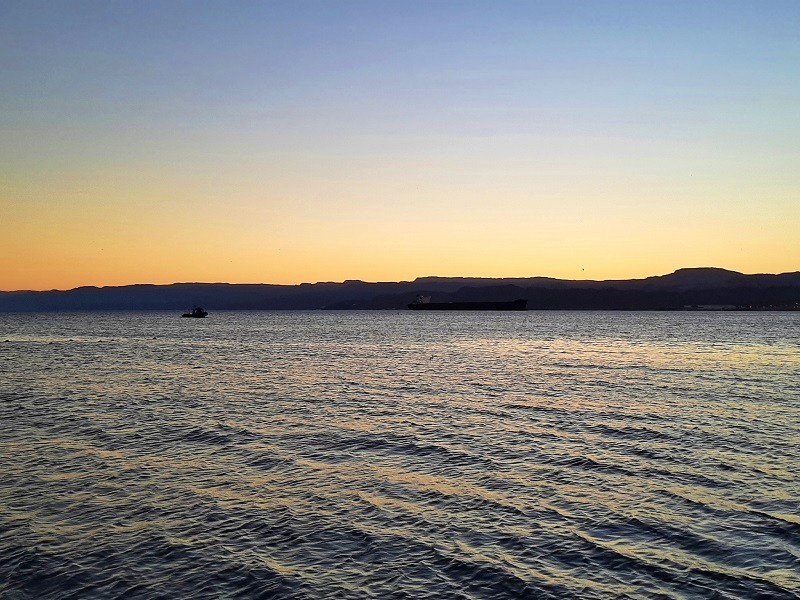
Seafood dinner
If you visit Aqaba, it’s an absolute must to dine out one evening at the city’s fish market among the locals.
Eating at the fish market is as far from the experience of dining at your hotel resort as you can get, with hardly any tourists around and many restaurants not even having English-language menus.
However, if you want to soak up the local culture and enjoy delicious Jordanian cuisine, eating fresh fish or seafood at the fish market is definitely the way to go.
You can find the Aqaba fish market on Al-Afran Street, about a block southeast of the fort.
Most places at the Aqaba fish market function as both fish sellers and restaurants, selling their produce in the morning and switching to restaurant service later in the day.
I randomly decided to sit at a restaurant called Abu Bakr, where I ordered sayadieh, the fish dish of choice.
Although sayadieh is originally a Lebanese dish, it is also popular across Jordan and the wider Middle East, and most other patrons at this Aqaba restaurant seemed to order it as well.
Sayadieh is a highly fragrant dish that typically consists of an entire white fish served with rice, caramelised onion, pine nuts, and a generous amount of spices, such as cumin.
The meal was absolutely delicious, and the final bill was lower than what I had paid for my lunch.
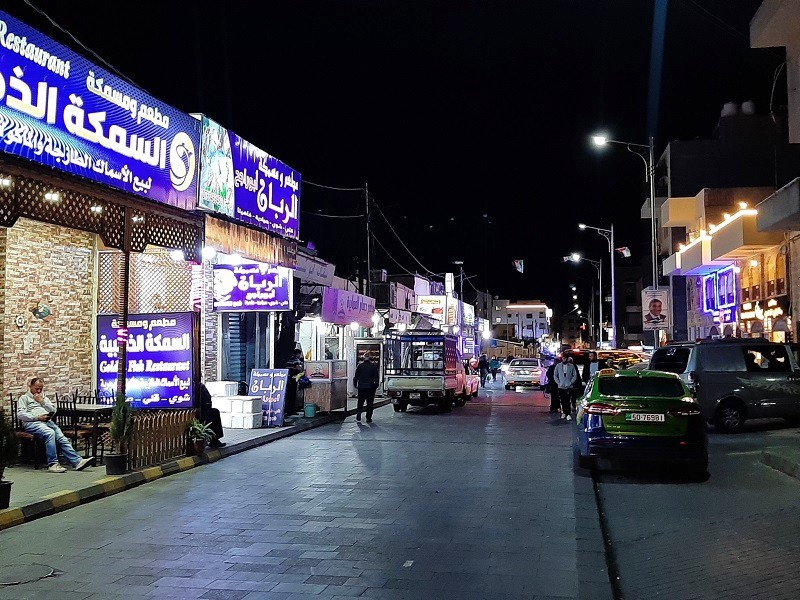
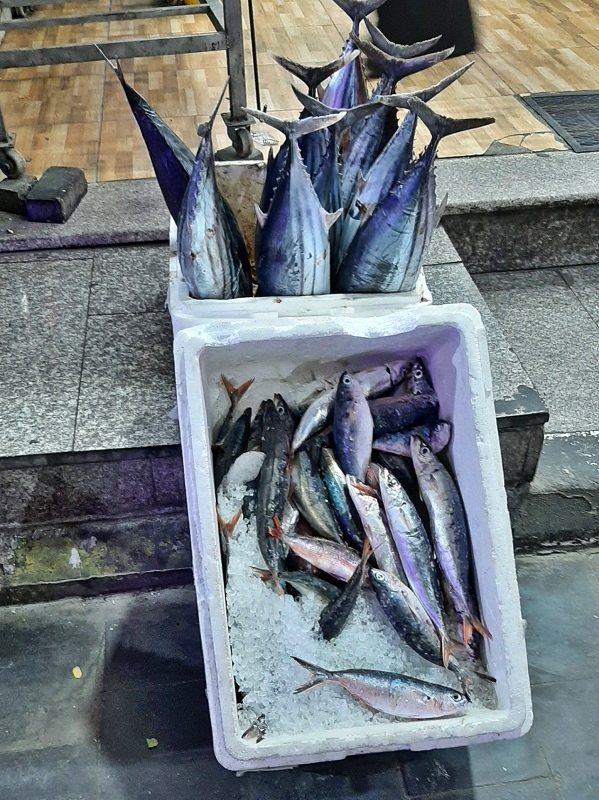
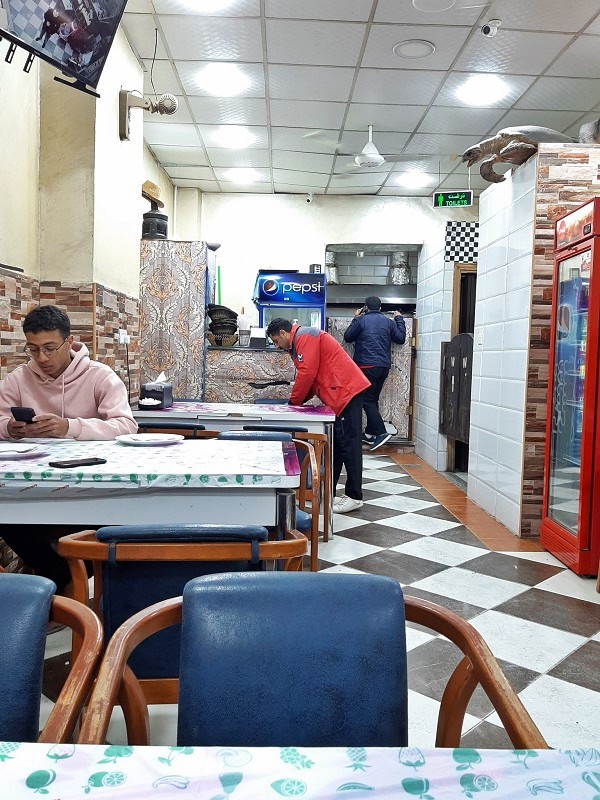

Back to the hotel
After the delicious dinner, I slowly walked back to my hotel.
It was enjoyable to see how much livelier the streets of Aqaba were in the evening, with many locals out buying groceries and stocking up on goods.
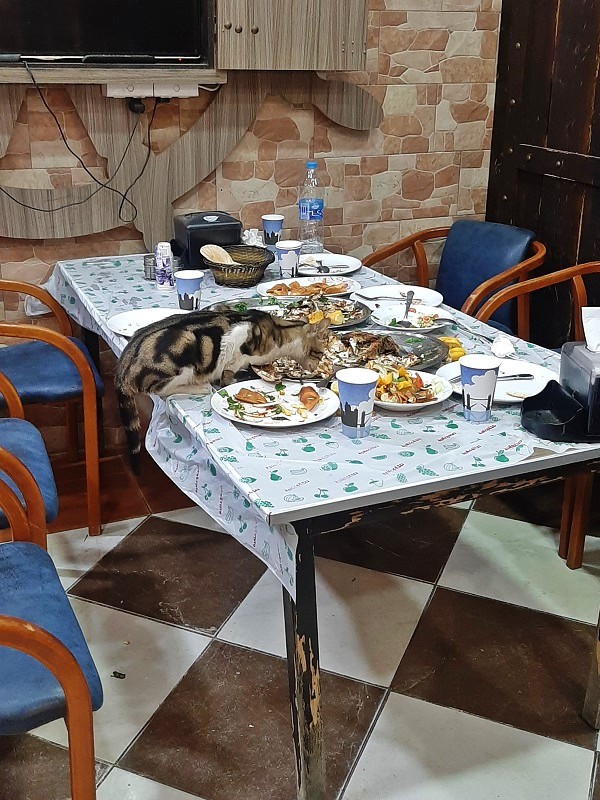

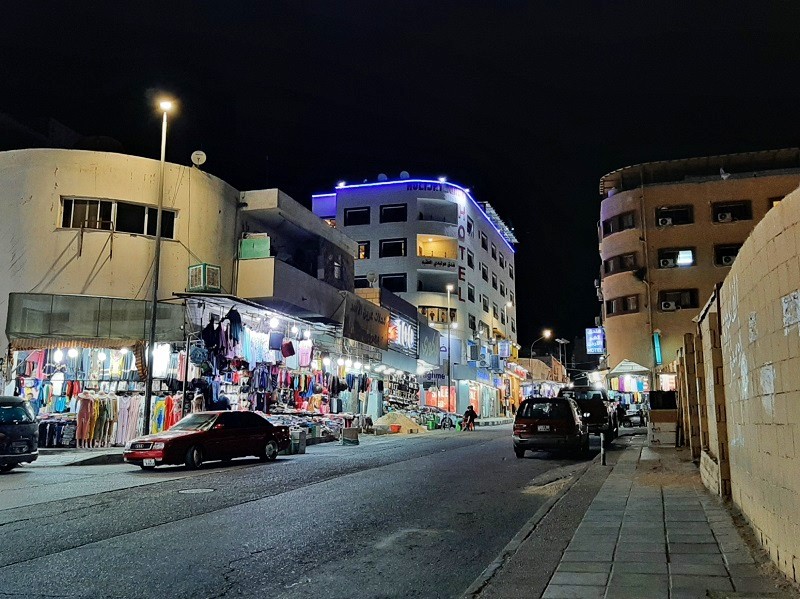
Nairoukh Hotel
Although it was tempting to book a beachside hotel resort for my stay in Aqaba, I eventually decided on a more budget-friendly option.
I stayed for two nights at Nairoukh Hotel, a local hotel situated along the main coastal road in the city centre of Aqaba.
For the price I paid ($40 per night), I had no complaints whatsoever.
My room was comfortable, the bathroom and shower were spotlessly clean, and all essential hotel room amenities, including air conditioning, a fridge, and a kettle with coffee, tea, and water, were provided.
Breakfast was included in the price and was perfectly satisfactory, both in terms of the variety of the buffet and the quality of the food.
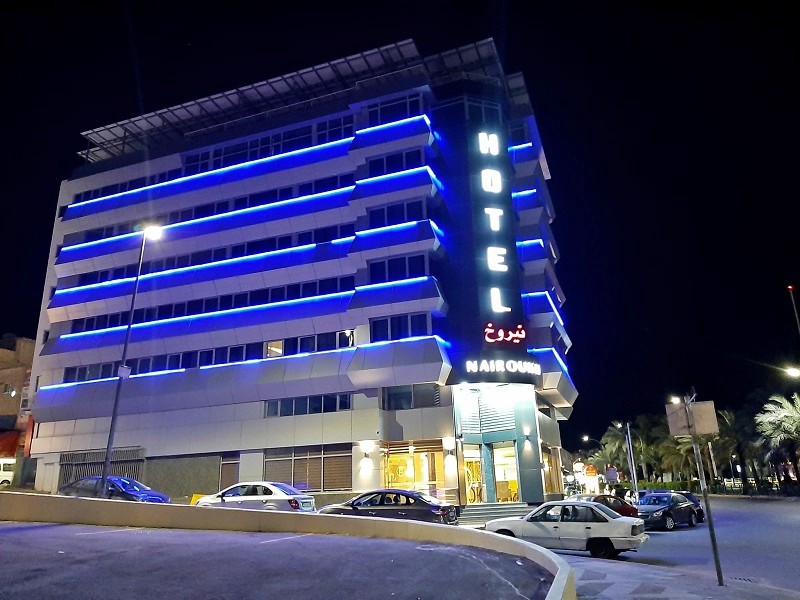
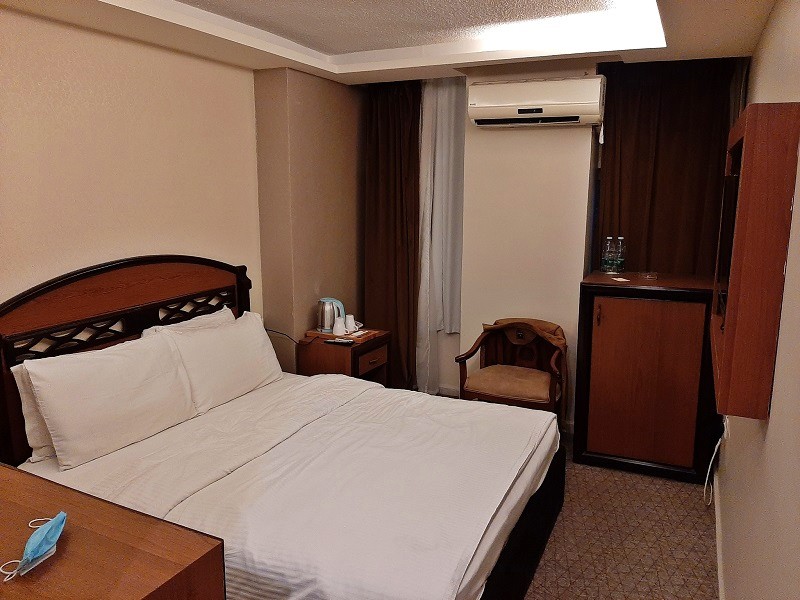
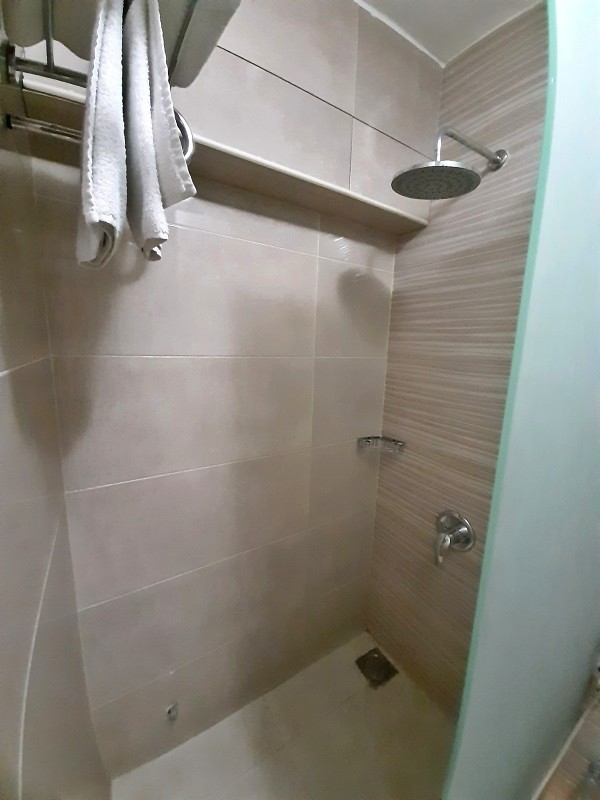
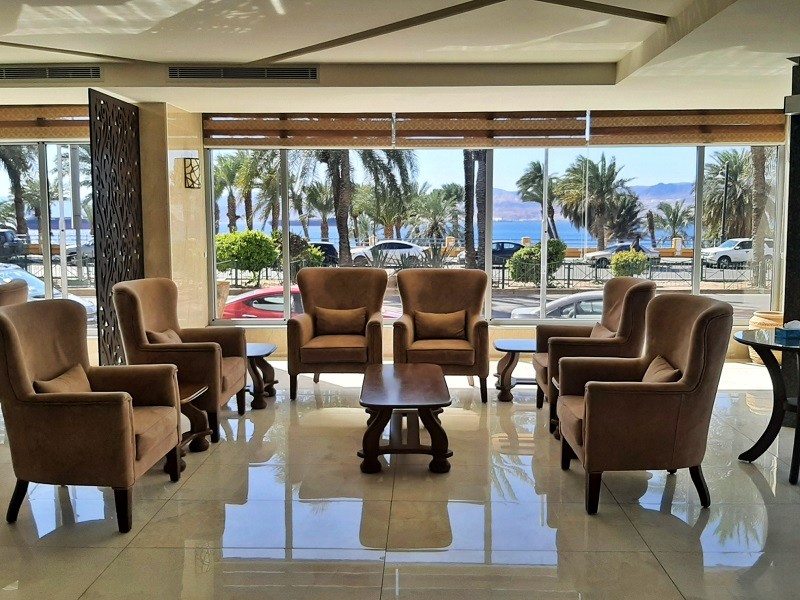
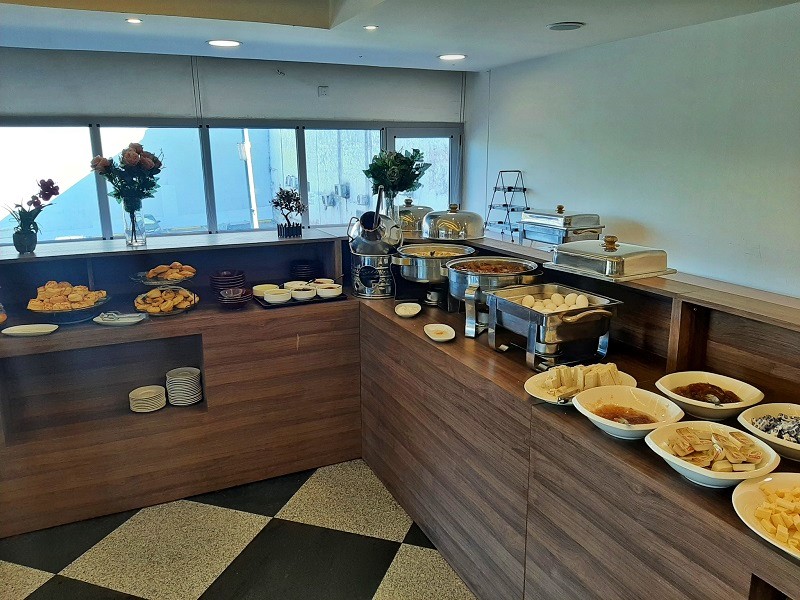
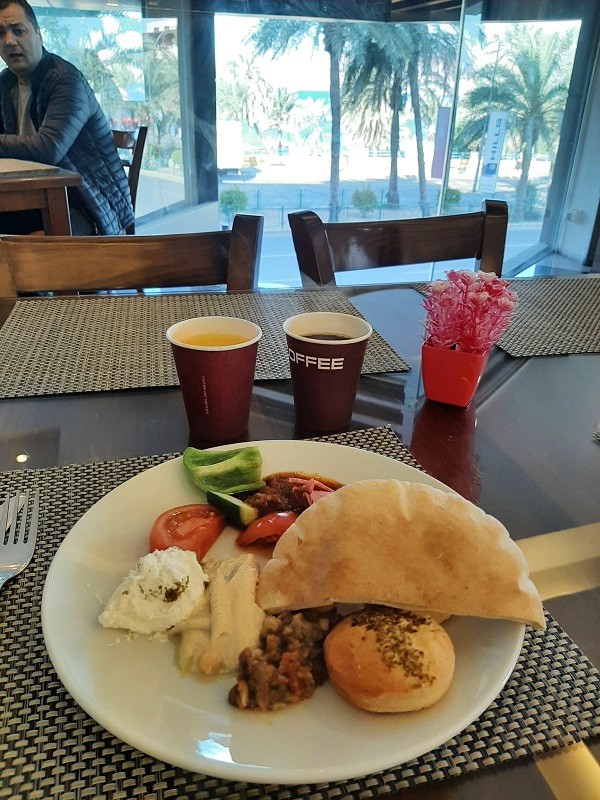
How does Aqaba compare with Eilat or Taba?
A common question among visitors to the Gulf of Aqaba is which destination on this part of the Red Sea coast is the best: Aqaba in Jordan, Eilat in Israel, or Taba in Egypt?
Although these destinations are located close to each other in this tri-nation border area (or four nations if you include Saudi Arabia), I must say there are quite a few differences between them, based on my previous visits to all three countries.
I don’t think there is one destination that is clearly the best, as much depends on what you are looking for.
In my opinion, Taba in Egypt stands out for having the best beaches and snorkelling, and it also offers the best price-quality ratio for its hotel resorts.
Israel’s Eilat, on the other hand, is by far the most lively and pleasant city among the three Gulf of Aqaba tourist destinations, with the best bars and nightlife – something that is completely absent in Aqaba and Taba.
Aqaba, on the other hand, offers more interesting historical sights and is by far the best of the three for day trips, with both the Wadi Rum Desert and Petra being relatively short drives away.
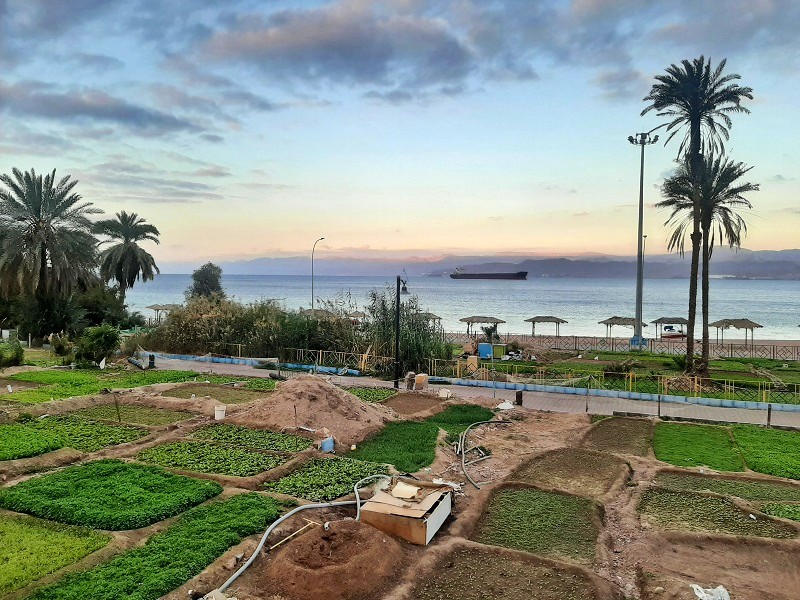
Conclusion
Aqaba, Jordan’s only city on the Red Sea, is a great destination if you’re looking for beach time and sunshine, though it also offers a few interesting historical sights.
Most people flock to Aqaba to relax at one of the city’s hotel resorts, and even in winter, it’s certainly possible to get a suntan or swim in the Red Sea.
Don’t forget to take advantage of Aqaba’s seaside location by enjoying some fresh fish or seafood, ideally at the city’s fish market among the Jordanian locals.
Aqaba is however not only about the beach and sea, as there are also a few interesting sights you can visit, such as the archaeological site of the ancient Islamic city of Ayla.
A must-visit sight is Aqaba Fort, famously captured by Lawrence of Arabia and the local Arab tribes during the Arab Revolt in 1917.
Aqaba also serves as an excellent base for day trips to the Wadi Rum Desert or Petra, although both of these famous Jordanian sights warrant a much longer visit than just a few hours, as there is plenty to see and do for multiple days.
Indeed, many people visit Aqaba as the final stop (or starting point, as in my itinerary) of their trip across Jordan, and it makes for a fun introduction or a great farewell to the country.
Trip report index
This article is part of the ‘Journey Across Jordan: From Aqaba to Petra and Amman‘ trip report, which consists of the following chapters:
1. Subsidised Flights: Why Airline Tickets to Jordan Are So Cheap
2. The Jordan Pass: Save Money and Time on Your Jordan Trip
3. Exploring Aqaba, Jordan’s Seaside Resort City (current chapter)
4. Jordan Bus Travel: Amman, Aqaba, Petra, Wadi Rum by JETT Bus
5. Wadi Rum Desert: Horse Riding in Lawrence of Arabia’s Footsteps
6. Petra: How to Plan Your Visit to Jordan’s Most Famous Sight
** rest of the chapters to follow soon **

